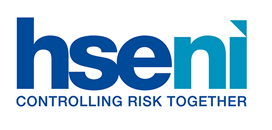Overview
The gig economy is growing, and the ways people work are changing so employers need to think differently about how to keep workers healthy and safe. It typically covers short-term, informal working relationships where work is generally:
- on-demand
- obtained through an online platform
- delivered on a task-by-task basis
It cuts across many sectors, where 'gig economy' can have different meanings and working practices, but it is mainly associated with the transport and logistics sectors, for example courier work.
For health and safety purposes, gig economy workers should be treated no differently to other workers and will often identify as agency or temporary workers, or self-employed. They may also be 'limb (b) workers' and entitled to certain employment rights as a result.
Roles of suppliers and end user businesses
The below information covers the health and safety responsibilities of:
- suppliers (employment agencies and employment businesses)
- end user businesses
The agency could be the employer but in many cases the employment business will be the employer of the worker, since it retains ultimate control over their services.
In practice, the day-to-day responsibility for health and safety during the work assignment lies with the end user business because they will direct the work and may also control the premises where it takes place. They are therefore in the best position to manage the health and safety of the worker and anyone else that could be affected by their work.
The end user business must ensure the safety of all employees, including gig, agency or temporary workers, and anyone whose safety might be affected by their work.
Before the work starts
The supplier (the employment agency or employment business) must liaise with the end user business before work starts to identify anything that could cause injury or illness in their workplace or business operations. In doing so, they must assess the likelihood of any harm and agree actions for the end user business to eliminate or control these known risks.
Before placing the worker with the end user business, the supplier must ensure the identified risks have been controlled and obtain clear information on:
- the worker's duties
- the skills, experience and qualifications required for them to do the job safely
- the identified risks and control measures in place including health surveillance, where relevant, and clear guidance on how to raise health and safety concerns in the workplace
The supplier must check that the worker meets the job requirements and give them all information relevant to the job received from the end user business before work starts.
Co-operation and communication between suppliers and end user businesses is key in the safe placement of workers and a supplier should never send a worker to a job unless they are satisfied their health and safety will be protected.
During the work placement
It is important to agree and be clear on who does what and never assume someone else will take responsibility for workplace safety.
Ongoing collaboration between the end user business, the supplier and the worker will therefore help ensure that safety responsibilities are always clear. If it is not clear, it might mean taking responsibility to ensure the worker is protected or obtaining appropriate assurance from others in the supply/user chain.
Everyone involved should carry out their work in a way that ensures workers are not exposed to health and safety risks.
It is important to understand the types of work often carried out by gig, agency and temporary workers because this can lead to issues beyond what might be considered normal workplace hazards.
The work might be done by lone workers or against challenging deadlines, or possibly means the worker experiences long, unsociable hours in managing high demands.
All of these factors can have adverse health consequences for workers, such as musculoskeletal disorders, stress, tiredness and fatigue.
Resources
